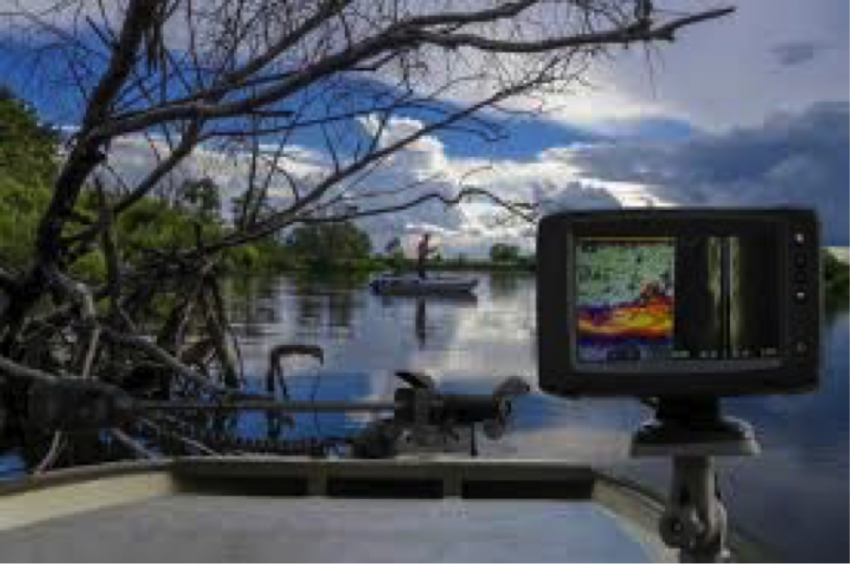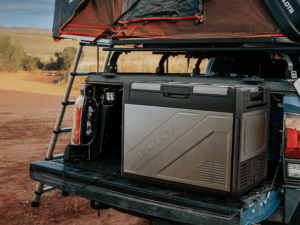
If you have a fish finder, you know that they can be very useful indeed.
However, there are some things which many people may not know about them, especially when it comes to using them properly. Today we want to talk about 3 fish finder tips that will change your fishing game forever.

- Always Look For Schools Of Feeding Fish
One big fish finder tip to follow is that you should always look for schools of fish that are in the process of feeding. Of course, when you use a fish finder, the whole point is to find fish to angle for, and the more fish you can find, the better. However, just because you find some fish with your fish finder unit does not mean that they are automatically going to bite. Some species of fish can be quite skittish and fearful. As soon as they hear your lure plunk down in the water above their heads, many fish will run for the hills, so to speak. It’s a problem that even professional fisherman face on a daily basis.
However, if you have a good fish finder, there is a little trick that you can use to increase your chances of getting strikes and making catches. What you want to do is look for schools of fish that are currently in the process of feeding. When you look at your fish finder, what you want to see is a large group of fish, one that is frenzying or quickly moving along with smaller fish. If you see a big group of fish, with some larger ones and lots of smaller ones, you can rest assured that the big guys are feeding on the little ones.
Well, this is when you want to make a cast, because for one, if there is a lot of movement in the water due to a feeding frenzy, the chances of the fish hearing your lure plunk down are greatly diminished. Furthermore, fish that are hungry tend to lose their inhibitions and are not going to put any thought into what they bite down on. A fish that is hungry and in the process of feeding is likely to chomp down on your lure or bait no matter what, making it the perfect time to strike. This is really only something that you can accomplish with a fish finder.
- Adjust The Tuning Sensitivity and Zoom In
Another big time fish finder tip that will change your fishing game has to do with the tuning sensitivity at which you have the fish finder set to. Now, most people might think that a fish finder which is set to the maximum sensitivity level is best. The thinking here is that the more things, and the smaller of the things which the fish finder can pick up, the better off you are. However, this is really not so at all.
When you have your fish finder set to a really high sensitivity level, it will pick up things like really small clusters of algae or other floating debris. Each time you cast, you will get a hook full of algae or seaweed. This is why you want to turn the sensitivity level down a little bit, so the fish finder only picks up organisms or fish of a certain size. It will avoid having you fish for algae and other small things that you just don’t want.
On the other hand, there are times where you might want to turn the sensitivity up, but it’s really only something you will discover as you take a few readings. On that same note, you might not be aware of this, but most fish finders can zoom in. It’s a really convenient feature because when you zoom in, you will get more details of the conditions, obstacles, and fish around and underneath you.
For instance, a school of smaller fish may just look like floating debris or some kind of plant formation. It’s something you won’t see when you are zoomed out. However, zooming in will increase the detail and will let you see exactly what is going on.

- Upgrade Your Fish Finder
Ok, so this does not really have to do with your current fish finder, but it is still a useful tip nonetheless. If you have an old-school fish finder, a stationary one, one with a black and white screen, and a sonar frequency that is old and outdated, well then it is really no wonder why you are not able to find or catch any fish. Kayak Fish finders are rapidly developing in terms of their capabilities, as well as their size and types too. You want to get a new fish finder, one that has a really nice color display with a high resolution, one that can zoom in and out so you can see all of the details.
Old school fish finders are often not the best at reading water temperature accurately either, something which can make a big difference, so getting a newer one that can take accurate readings is something you definitely want to look into. However, one of our favorite innovations in the world of fish finders is the mobile fish finders. Up until recently, fish finders were really only found mounted on boats, or some of them allowed for casting a few yards from the boat.
Now there are fish finders which come attached to motorized and remote controlled boats. Yes, they are like children’s remote controlled boats, but they come with a fish finder attached to them. This is indeed very useful, as you can boat around a few hundred yards in each direction with your RC fish finder. It’s great because these fish finders have all the same capabilities as boat mounted models, but are much smaller and quieter, and therefore the chances of them scaring fish away are much smaller.
Conclusion
Folks, if you follow these 3 fish finder tips, we know that your own fishing game will be greatly improved. These tips for success might not be all of the tips out there, but in our opinion, they are certainly the most important ones.
Article Written By; Shiela Alvarado







